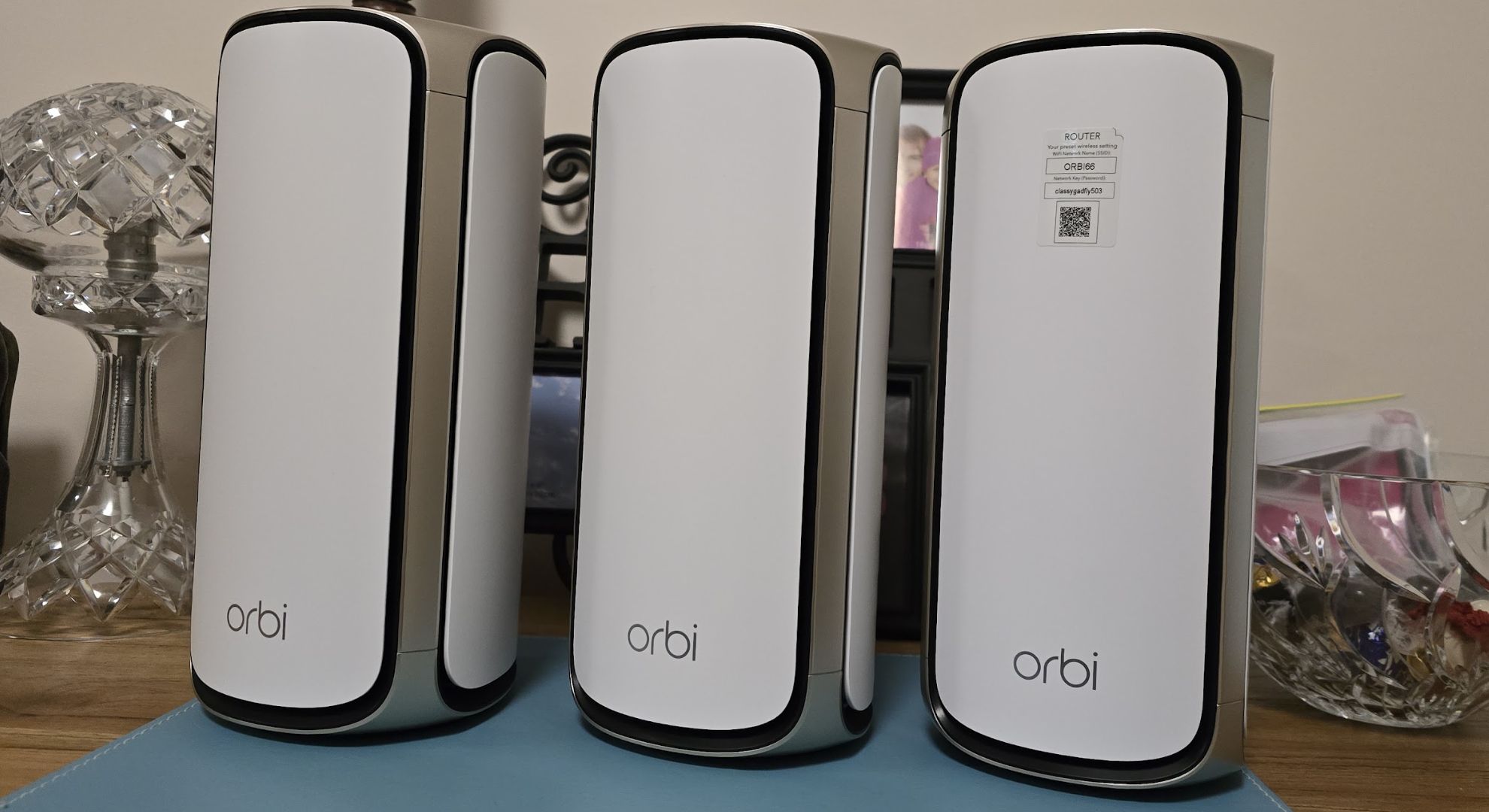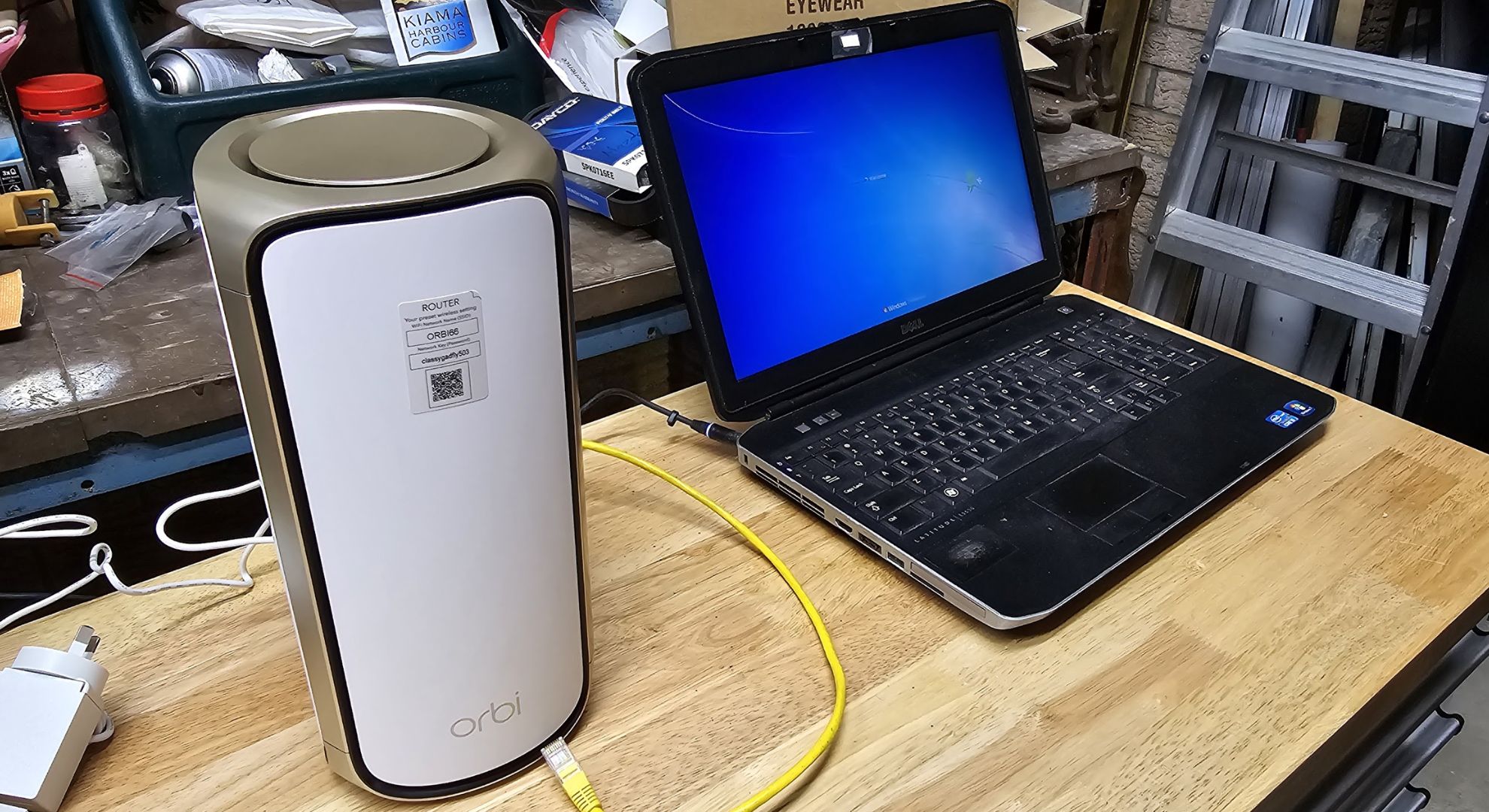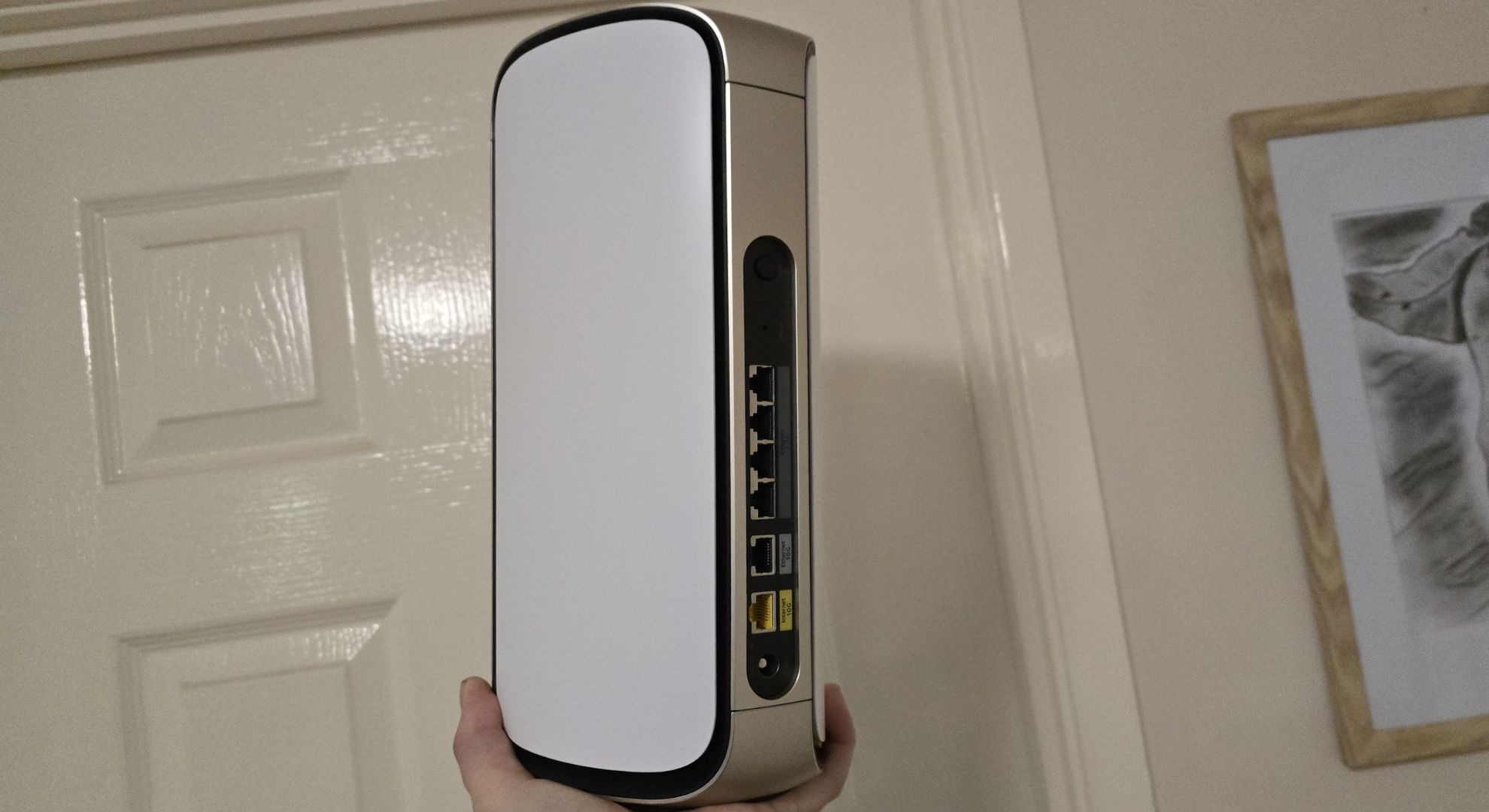Netgear’s latest mesh router completely solved my dad’s home internet woes
I’d never really seen just how effective mesh Wi-Fi could be until I took Netgear’s latest Orbis to my dad’s house

It’s difficult for tech writers like myself to get a broad view on a piece of tech within our day-to-day lives. Many of us live in small rental apartments in the inner city, which severely limits our ability to conduct holistic reviews on more fixed things like doorbells and security cameras. In the case of mesh Wi-FI, the tech’s greatest advantage is consistent coverage across a wide area, so it’s tough to get a good view in a small apartment. My solution with this modem-router? Take it to my dad’s big home out in the suburbs, of course.
Netgear sent me the company’s new Orbi 970 Series mesh routers some months ago, which represent the height of the company’s home internet tech (and the most expensive). They’re some of the first mesh modem-routers equipped with Wi-Fi 7, which offers improvements over Wi-Fi 6E, the most impressive of which being a shared SSID for 5GHz and 2.4GHz bands – no more split network names!
The Orbis came to me at a brilliant time – my dad was having Wi-Fi problems in the (much larger) family home. At the time, the smart home devices in his pool area, including the pump, lights and cleaning robot, required a 5GHz connection that my dad’s old modem-router could not extend far enough across the property, especially with so many walls and obstacles in the way. Moreover, the home was plagued by consistently slow speeds.
Exacerbating the issue was the fact that Dad’s modem-router combination was just old (God bless him, he holds onto tech for as long as he can). It was so old that I remember the very same devices being used seven years ago on an ADSL2+ connection when I was still living in the family home. Certainly not ideal for Australia’s fiber-based National Broadband Network (NBN), nor the 250Mbps-capable plan he’s paying for. I’d been telling my dad to consider mesh for a while, but he didn’t see how it would actually improve anything.
So how did the Netgear Orbi 970 mesh routers perform? Perfectly.
Let's get meshy

Netgear quotes the Orbi 970 mesh routers as capable of providing a consistent Wi-Fi experience across 660 square meters with three modules (the standard allocation of devices) placed evenly across a home. My dad’s block of land is 700 square meters in total, but considering only about 200 square meters of that is the physical home, a single module would have also worked a treat as they’re rated at 220 square meters each.
The gateway module was placed in the garage, where the access point is (in this case, the FTTP NBN box – or fiber to the premises for those who aren’t in Australia). Functioning as a modem-router system, this is all we needed to get started, though this may be different for you depending on the technology type used in your home.
Sign up for breaking news, reviews, opinion, top tech deals, and more.
We immediately ran into a problem that slowed setup. Netgear encourages users to stick to the app when setting up their mesh Wi-Fi, however as my dad uses a PPPoE connection (where you typically need to enter a username and a password in the back-end of a modem) we needed to login with an ethernet connection to a computer. Thankfully the Netgear Orbi 970 mesh routers have this functionality (the Eero 6 Pros on the other hand do not, as I had previously found).
After this, pairing the Orbi modules to the gateway was easy. We placed the remaining two modules throughout the home to achieve the greatest quality Wi-Fi.
The same SSID and password as the previous modem-router combination was used, which allowed almost every device in the home to reconnect quickly without needing to sign in individually. Even without a separate SSID for the 5GHz band, devices that required this connection hopped right on the single setup without a problem.
Up and running speedily

Going from a dinghy modem-router setup to the most expensive commercially available mesh system available in Australia absolutely worked well. My dad’s office, which is a fair distance from the garage, would previously report a maximum speed of 30Mbs – but often much less (as low as 2Mbps) – on the previous modem-router setup, but with these modules, that cranked all the way up to 266Mbps. I noted this same speed across the house, with some of my dad’s older computers recording a maximum speed of 100Mbps.
The big takeaway wasn’t necessarily that this was some be-all and end-all mesh router to buy, but that you should really give mesh Wi-Fi a shot if you’re looking to drastically improve Wi-Fi quality in your home. My dad’s home isn’t the biggest by any account, despite the measurements listed in this article, but I can still confidently say that this setup would provide a benefit over a single modem-router setup. As the mesh modules use their own specific band to stitch an even blanket of Wi-Fi coverage between themselves, this solution offers a much more consistent experience than, for example, using a Wi-Fi extender or simply using a more powerful modem.
I’m not sure if I would recommend the Netgear Orbi 970 to pull off this Wi-Fi overhaul in your home, however. The mindblowing £2,199.99 / $2,299.99 / AU$4,299 price tag for the three-module kit is enough to turn away a lot of buyers. It might be worth considering this device if you want Wi-Fi 7, but just keep in mind that many devices don’t currently support this standard (the only one in my household of fairly up-to-date tech is the Samsung Galaxy S24 Ultra).
The bottom line – give mesh a shot. It might be the Wi-Fi upgrade you’ve been waiting for.
You might also like...

Zac was part of TechRadar's Australian phones desk, covering the big releases from the likes of Google, Samsung and Apple. He continues to write about the Aussie EV market for this publication. He's previously written for Gizmodo Australia, Canstar Blue and The Daily Mail Australia (with articles on Nine, Junkee, Kotaku Australia and Lifehacker Australia).